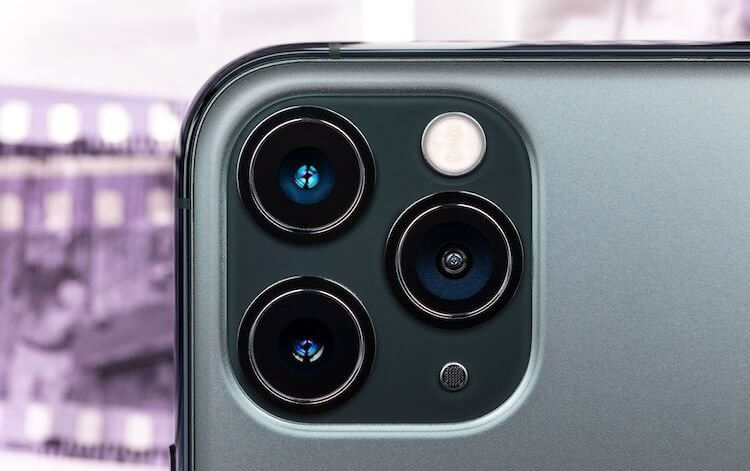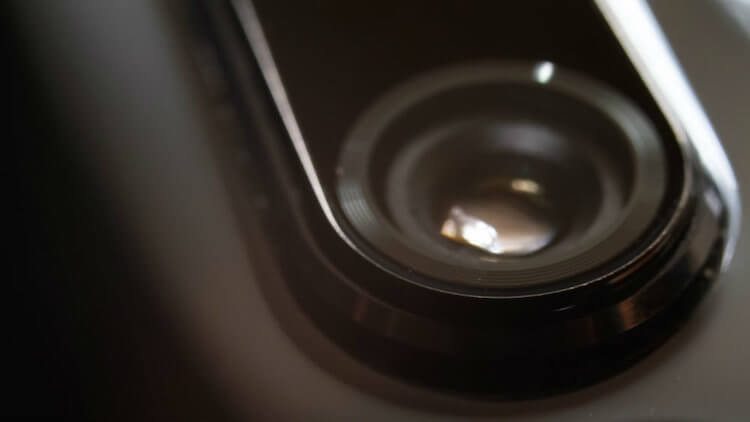Camera quality is the newest “arms race” for smartphones, and one of the most significant factors in taking great pictures is the camera sensor. While high megapixels is becoming an increasingly popular trend, the size of a camera's image sensor is actually much more important. For example, Huawei consistently brags about including larger sensors in its flagship phones compared to the competition. Component manufacturers such as Sony and Samsung are also increasingly looking at the size of their sensors. But why is the size of a camera sensor so important for taking great photos? And most importantly, why is the size of the sensor much more important than the resolution, if everything in the world is striving for miniaturization?

The camera can be anything. It is important which sensor is in it.
In short, the larger sensor receives more light, and the smaller one receives less, but the problem is much bigger than the extra “little” light. Let's understand everything in order.
What is the size of the phone camera sensor
At a basic level, the size of the sensor determines how much light enters the camera to create an image. While resolution plays an important role in detail, it is the amount of light captured that determines the camera's exposure balance, dynamic range, and even sharpness. This is why the 16MP and 20MP DSLRs released a few years ago still offer better image quality than today's 108MP smartphones.
Most smartphone sensors are typically only 1 / 2.55 “or about 1 cm across, although some are larger at 1 / 1.7” and up. In comparison, DSLR camera sensors are over an inch in size, easily 4 or 5 times the size of a smartphone's sensor. Smartphone sensors are tiny by comparison, although some brands are trying to close the gap. At the moment, the largest sensor in the disgraced smartphones Huawei of the P40 series. Its diagonal is 1 / 1.28 inches.

The size of the matrix of a DSLR camera is much larger than that of a smartphone. Hence the quality of the pictures.
What are the advantages of cameras with a large sensor
The larger the sensor, the more light it captures for a given shutter speed, ISO (exposure sensitivity), and aperture. Lack of light can be compensated for with slower shutter speeds, but this will result in blurred images.
Another reason a large sensor is better than a small sensor at the same resolution is its wider dynamic range. This is the difference between dark and light areas. That is, with a larger matrix size, the picture will be clearer and more contrasting.
Pictures also suffer from the point of view of the appearance of excess noise. Since the light-sensitive elements themselves are located very close to each other, distorted light may fall on them and additional noise will appear from this. Noises will also appear from the above-mentioned lack of light. The sensitivity of the sensor will rise and the picture will deteriorate even more.
How to improve your smartphone camera
With the move to higher resolutions (now above 100MP), increasing sensor size has become more important than ever. Of course, sensors with a resolution of 48 megapixels, 64 megapixels and even 108 megapixels will be able to give a more or less detailed image in bright light on a sunny day, but do not expect that you can zoom in on what is at a distance of a kilometer, print and hang in a frame. The quality will be sufficient only to distinguish the silhouette of the object, but nothing more. This increase is just a toy, but nothing more. Even a person's face cannot be distinguished. Especially if the lighting is not very good.

The quality of pictures on smartphones is greatly exaggerated.
Another relatively recent trend in the mobile space is pixel binning technology, allowing these high resolution sensors to combine pixels for better light capture. These larger sensors and correspondingly larger pixels significantly improve the quality of low-light photography. This results in less noise and much better colors, even in low light conditions.
Large sensors are almost the most important part of a good low-light shot. Even bokeh is good only on a large sensor. Smartphones still process the image further, but that is why blur is often unnatural.
What affects the quality of images
It should also be added that the size of the sensor is not the only criterion for a high-quality image – it is simply more important than the resolution, which, after a certain, long-passed milestone, does not carry any semantic load.

A smartphone camera can and should be used, but the importance of resolution should not be overestimated.
Objective lenses are also important for a good shot. Do not think that glass is the same everywhere. It is by eye that they are all the same, but for the camera, the transparency and accuracy of the lens is critically important. How important is lens design in a lens system. It takes years and millions of dollars to develop an optimal design. They wouldn't fight for it just like that.
Have you ever noticed that the pictures of two smartphones with the same camera differ very much? This is due to the fact that they process the image differently, which is also very important. The lens transmits light to the matrix and it produces only a few million colored dots, which must be properly processed and assembled into a finished image. This is what the processing program does. Machine learning is sometimes mixed in here, but it's still software processing.
Do you still think that the resolution of the camera is the most important characteristic of the camera? But no. There are much more important parameters, but if everything is more or less sorted out with the software and optics, then something needs to be done with the size of the sensor, and this is hindered by the fact that the camera will stick out even more if you do not find additional space in the case. That's the problem.
